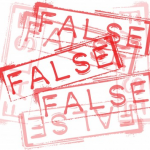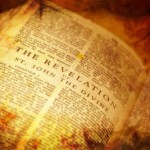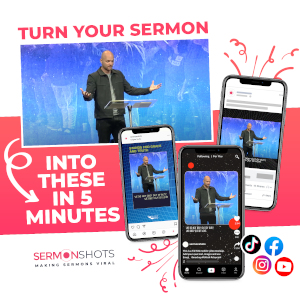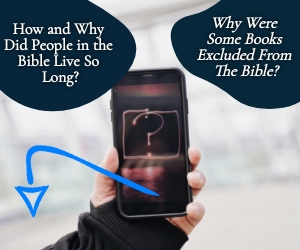Who are the Nicolaitans mentioned in the Book of Revelation? Are there still Nocolaitans around today?
The Church of Sardis
The first mention we have of the Nicolaitans is where “the angel of the church in Ephesus write: ‘The words of him who holds the seven stars in his right hand, who walks among the seven golden lampstands” (Rev 2:1), and that of course refers to Jesus Christ. The Lord Himself said to this church, “I know your works, your toil and your patient endurance, and how you cannot bear with those who are evil, but have tested those who call themselves apostles and are not, and found them to be false. I know you are enduring patiently and bearing up for my name’s sake, and you have not grown weary” (Rev 2:2-3), but all is not well with the Church at Sardis as Jesus said, “I have this against you, that you have abandoned the love you had at first. Remember therefore from where you have fallen; repent, and do the works you did at first. If not, I will come to you and remove your lampstand from its place, unless you repent” (Rev 2:4-5). The good news is that this church did “hate the works of the Nicolaitans, which I also hate” (Rev 2:6), so they resisted this cultic group known as the Nicolaitans. And so must we, but the same could not be said of the Church at Pergamum; at least for some of them.
The Church of Pergamum
The Church of Pergamum was told by Christ that “you hold fast my name, and you did not deny my faith even in the days of Antipas my faithful witness, who was killed among you, where Satan dwells” (Rev 2:13), but now comes the bad news. Jesus said, “I have a few things against you: you have some there who hold the teaching of Balaam, who taught Balak to put a stumbling block before the sons of Israel, so that they might eat food sacrificed to idols and practice sexual immorality. So also you have some who hold the teaching of the Nicolaitans” (Rev 2:14-15). Balaam knew the only way that Israel could be defeated was from within…and that was from within; through sexual immorality (Num 31). Did you know there are “Nicolaitans” churches today that endorse same-sex marriage, have gay or lesbian pastors, and do all but endorse sexual immorality by their tolerance of “Jezebels” within the church? The great many of these apostate churches shouldn’t surprise us because we know Satan has his own ministers and that means, he has his own churches (2 Cor 11:14).
Nicolaus of Antioch
Could the Nicolaitans be related to Nicolaus, a proselyte of Antioch who was also a deacon in the early church? Remember that Nicolaus and other church leaders were “set before the apostles, and they prayed and laid their hands on them” (Acts 6:5-7), but what ever happened to Nicolaus the Deacon? The question of who were the Nicolaitans has drawn a great deal of scholarly debate because there is still a lot of obscurity, so why did God hate the practices of this group so much? And how did they make their way into the Book of Revelation, into early Church history, and possibly even into our society today?
Nicolaitans
A large number of biblical scholars believe Nicolas is the same man who appeared to convert to Christianity in Acts 6:5, but somehow lost his way to a teaching known as Gnosticism. The Gnostics were a heretical sect that swept away many members of the church in the second century. That seems to align with the fact that Nicolaitans buckled under the pressures of Roman rule, lost their faith, and seemed to want to drag other Christians along with them. Revelation chapter 2 seems to link the practices of the Nicolaitans with the practices of those who listened to Balaam (Rev 2:6, 15). If you remember that account, Balaam used Midianite women to seduce the men of Israel which lead them into worshipping other gods, so the Nicolaitans could represent false churches who allow sin in the church to go unchecked and have a different Jesus than the One taught in Scripture.
Balaam the False Prophet
Obviously, Jesus links Balaam to the Nicolaitans who were the apostate followers of Nicolaus. They quickly became immersed in the pagan Roman culture and attempted to woo Christians away from the original faith once delivered (Jude 1:3). The Nicolaitans also ate food offered to idols. Even though this doesn’t seem like big sin, in the context, they had committed a serious spiritual crime…spiritual adultery or idolatry (1 Cor 6:12). If they ate the food given to the idols, they would have had to go to the idolatrous temple to receive this food, and we know those satanic temples were where they would engage in the sexual immorality. Irenaeus, an early Church Bishop (Overseer), identifies the followers of Nicolas as one of the seven chosen in Acts 6, and as men who “lead lives of unrestrained indulgence,” so it appears Nicolas was never really converted. [1]
The Gnostics
The word “Gnostic” comes from Gnosis which means “knowledge.” The Gnostics thought that salvation came to only a few and those few who had the secret knowledge or had divine insight. Just as gnosis means knowledge, agnosticism teaches that there is a God but that He is not knowable or that He is a Personal God. They might acknowledge there is a God, but the knowledge of Him is highly limited, but believers can thank God that we can know God through Jesus Christ. And we can thank God that the main things in Scripture are the plain things in Scripture, so there is no need to seek and find secret, hidden knowledge to enter the Kingdom of God. Just open the Bible! It’s plain to see.
Antinomianism
One author links the Nicolaitans to Gnosticism, writing, “John, the disciple of the Lord, preaches this faith (the deity of Christ), and seeks, by the proclamation of the Gospel, to remove that error which by Cerinthus had been disseminated among men, and a long time previously by those termed Nicolaitans, who are an offset of that ‘knowledge’ falsely so called, that he might confound them, and persuade them that there is but one God, who made all things by His Word.” [2] There is also great historical evidence that a Gnostic sect called the Nicolaitans were still around centuries later. Part of the Nicolaitans doctrine is a form of antinomianism, which is a great departure from the original gospel of repentance and faith (Mark 1:15) that Jesus taught. They believe they can freely partake in sin because the Law of God is no longer binding on them. That is the sin of presumptuousness or trampling “underfoot the Son of God” (Heb 10:9).
Second Century Nicolaitans
The Nicolaitans of the 2nd century seem to have continued in these same beliefs and even extended the views of the 1st century adherents, which held to the freedom of the flesh and sin, and the teaching that the deeds of the flesh had no effect upon the health of the soul and consequently no relation to salvation. [2] That’s why the doctrine of the Nicolaitans was so unsparingly condemned in the Book of Revelation by Jesus Christ (Rev 2) and is so dangerous.
Conclusion
We cannot fall into the same trap many of the 1st Century Christians fell into, and that is, since we’ve been saved, we can sin at will. We will never be sinless…but we should, over time, sin less! That is what Jesus Christ and the Apostles taught. We must be striving to live holy lives and to not be a part of this world (1 Thess 4; Heb 12:14), and to distance ourselves from the sin-endorsing churches of this world (Synagogues of Satan – Rev 2:9), but until God brings you to repentance and you put your trust in Jesus Christ, you cannot know the mysteries of the Kingdom, so why not trust in the Savior today and let Him bring you safely into the Kingdom. He is there now…waiting. Why not come to the Savior today and be saved?
1. Irenaeus Against Heresies, Book 1, Chapter 26
2. History of the Christian Church, Volume II, § 122 by Philip Schaff
Here is some related reading for you: The Seven Churches Described in the Book of Revelation
Resource – Scripture quotations are from The Holy Bible, English Standard Version® (ESV®), Crossway Bibles. (2007). ESV: Study Bible: English standard version. Wheaton, Ill: Crossway Bibles. Used by permission. All rights reserved.










 Welcome to What Christians Want To Know! The mission of this site is to equip, encourage, and energize Christians. Look for regular updates including Bible Verses, Bible Stories, Christian Quotes, Christian Answers, and much more. Find out
Welcome to What Christians Want To Know! The mission of this site is to equip, encourage, and energize Christians. Look for regular updates including Bible Verses, Bible Stories, Christian Quotes, Christian Answers, and much more. Find out 









